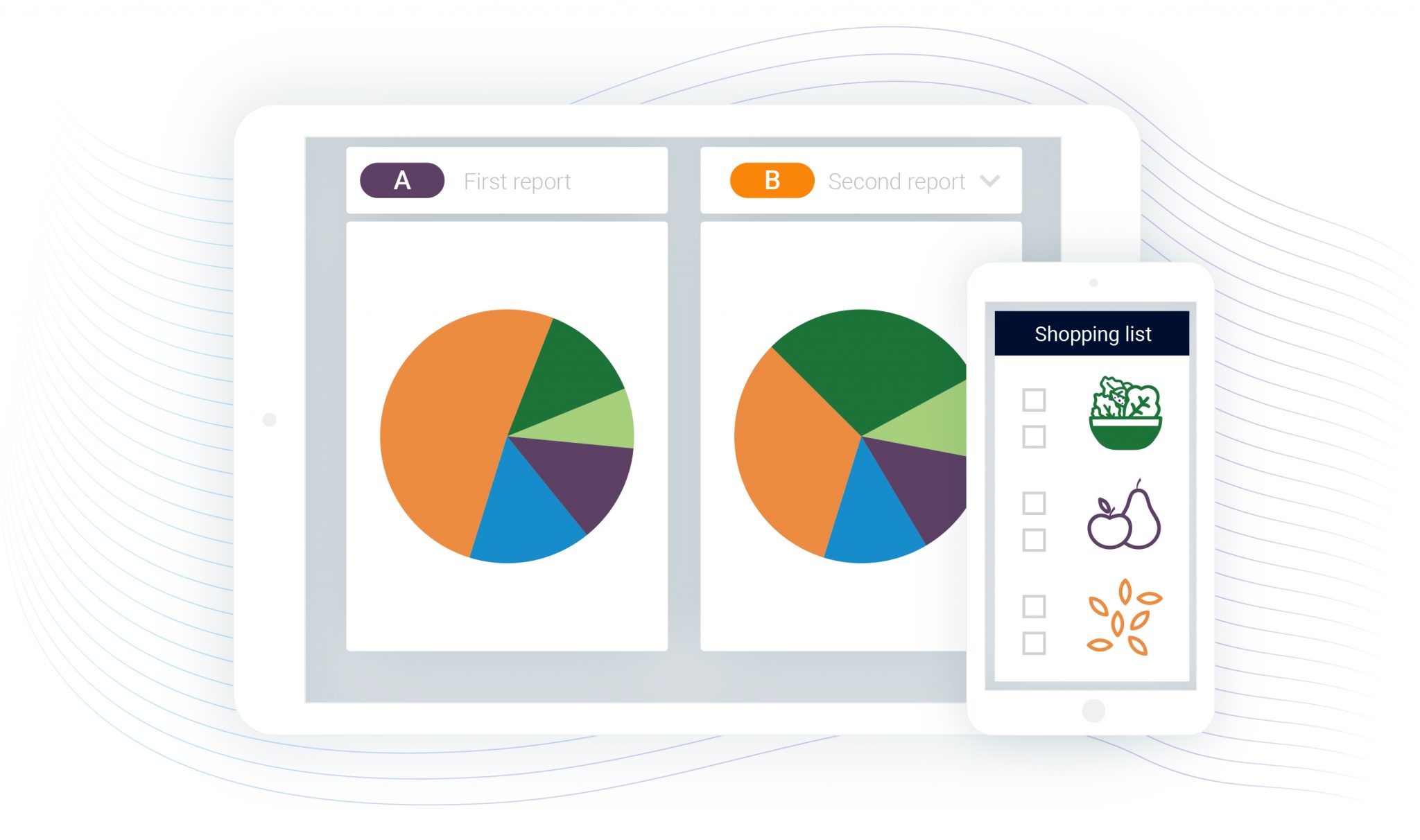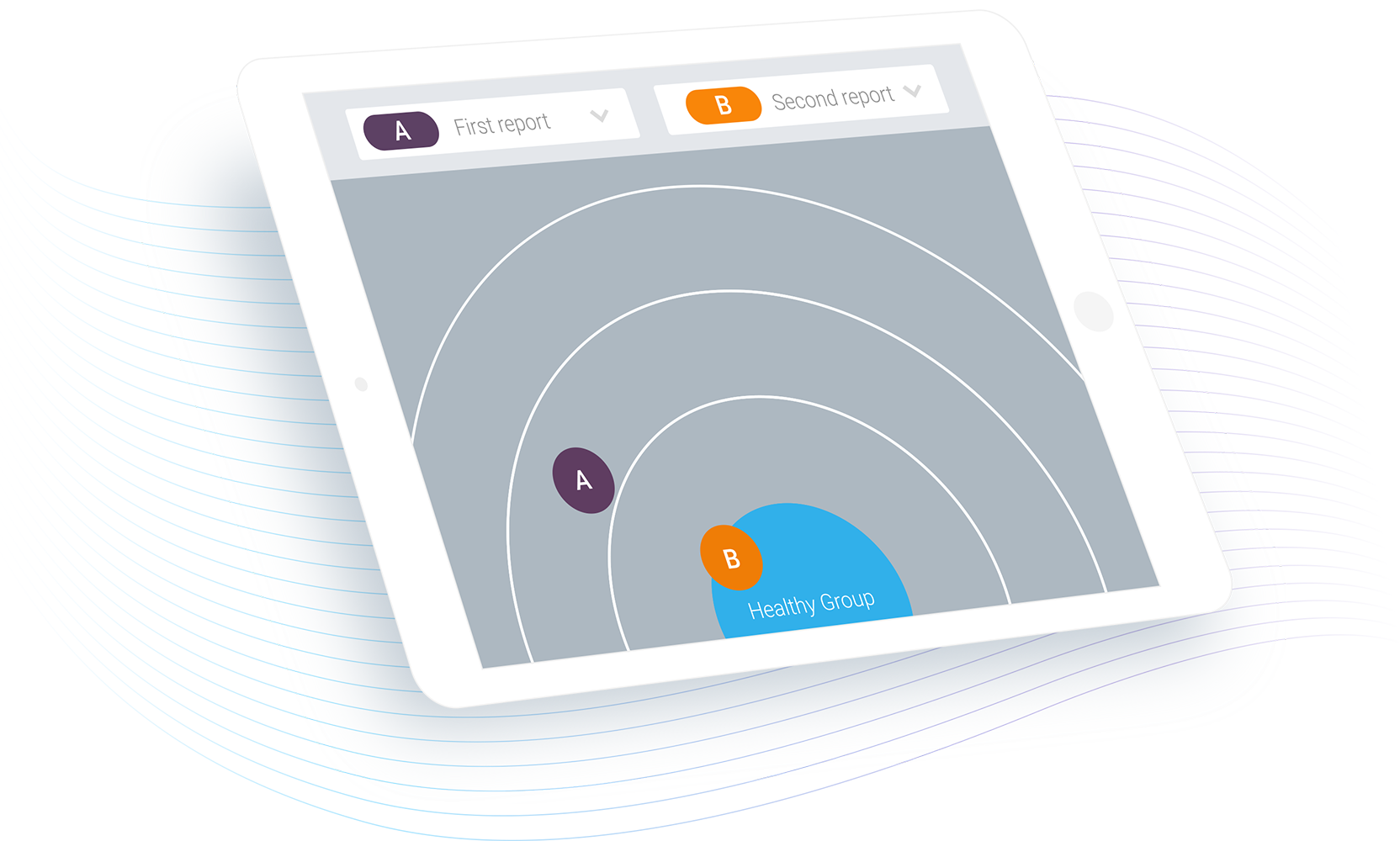
How does your diet compare to dietary guidelines and how can you make improvements?
Along with a Physical Activity Questionnaire and a Mental Health Questionnaire, Microba’s innovative gut microbiome report provides insight into your dietary patterns with a Food Frequency Questionnaire.
Why is this important?
The results from your Food Frequency Questionnaire are calculated to provide an overview of what an average day of eating looks like for you. This tool can help you identify the beneficial dietary patterns you already have in place as well as areas where you can make improvements.
You can use the insights gained from your Food Frequency Questionnaire to make dietary choices which promote optimal gut health and general wellbeing.
A look inside the report
There are two different guidelines highlighted in these results – the Australian Dietary Guidelines1 and the Nutrient Reference Values for Australia and New Zealand 2.
The Australian Dietary Guidelines provide recommendations on the suggested number of food group serves an average person should consume to get the proper nutrients and energy required1. You can examine how your Food Frequency Questionnaire results compare to the recommended intake for your age and gender by selecting each section of the pie chart highlighted in your Insight™ report. These sections include:
- Grains
- Vegetables
- Fruit, Milk, yogurt, cheese and/or alternatives
- Meat, poultry, fish, eggs, tofu, nuts, seeds, legumes and beans

The Nutrient Reference Values for Australia and New Zealand provide suggested daily targets for dietary fibre, and the percentages that protein, carbohydrates and fat are recommended to contribute to your overall energy intake2.
Following these guidelines can assist you in consuming adequate nutrition and reduce the risk of developing chronic disease. The percentages of carbohydrates, proteins and fats you are consuming are calculated as a proportion of your overall energy intake and should not be considered in isolation.
For example, a high percentage of energy from fat can result from a low intake of carbohydrate and/or protein even if fat intake is not excessive.
In your report, you can assess your daily nutrient targets, compare your reports (A and B) and monitor your fibre intake, and protein, carbohydrate and fat percentages over time.

Once you have reviewed this information, you can start to make changes to your diet using the foods highlighted in your personalised dietary suggestions.
If you are managing specific food intolerances, allergies or symptoms such as gluten intolerance or IBS, this interactive list of whole foods enables you to customise your suggestions further, by filtering out the following:
- FODMAPS
- Fructans
- Fructose
- Gluten
- Peanut or Treenut
- Polyols
- Wheat
You can delve deeper into why these recommended foods may help support the growth of beneficial bacteria in your gut and discover what the specific prebiotics in each are, by selecting the ‘tell me why’ section.

Recently, we made some important updates to the way your Food Frequency Questionnaire calculates, in order to optimise accuracy. To review your Food Frequency Questionnaire results, simply login to your report and enter the ‘Dig deeper into the detail’ section.

Don’t have a gut microbiome report yet? Start your Insight™ journey today.
*As always, it is recommended that you discuss any changes to your diet with a qualified health practitioner.
This microbiome test is not intended to be used to diagnose or treat medical conditions. A full disclaimer is available here


